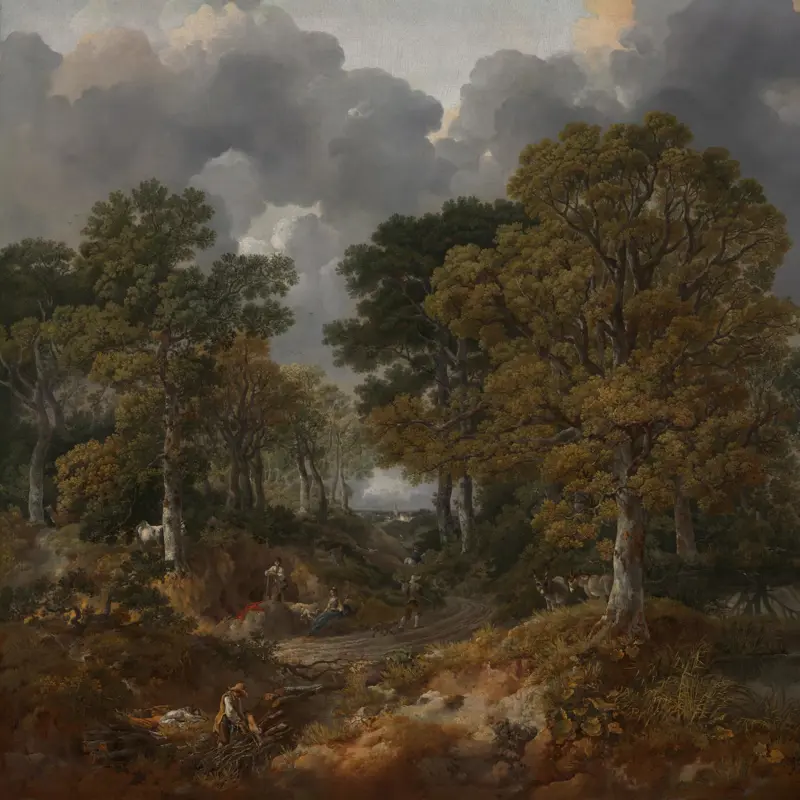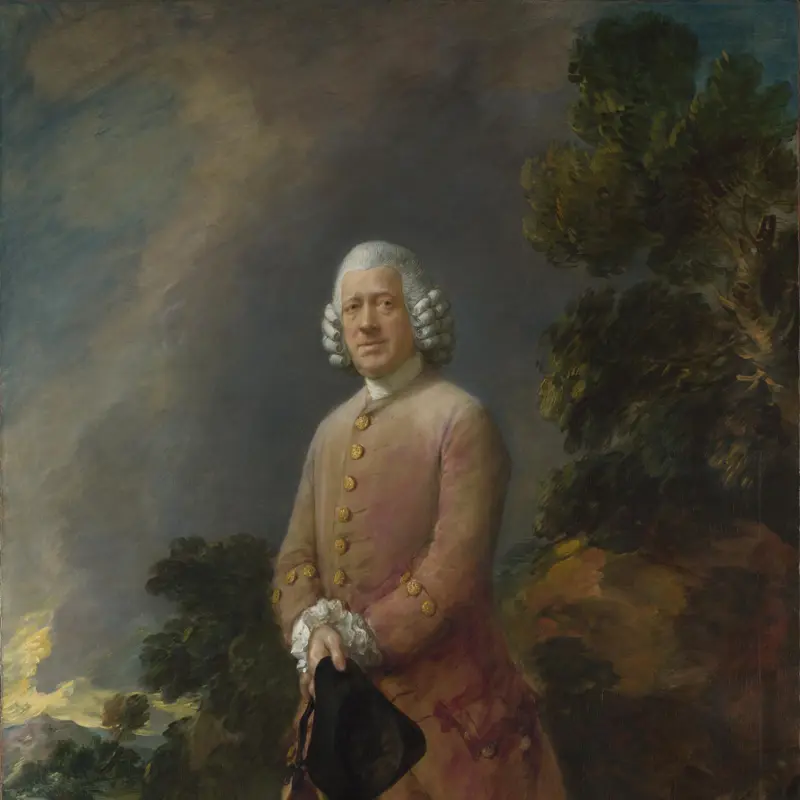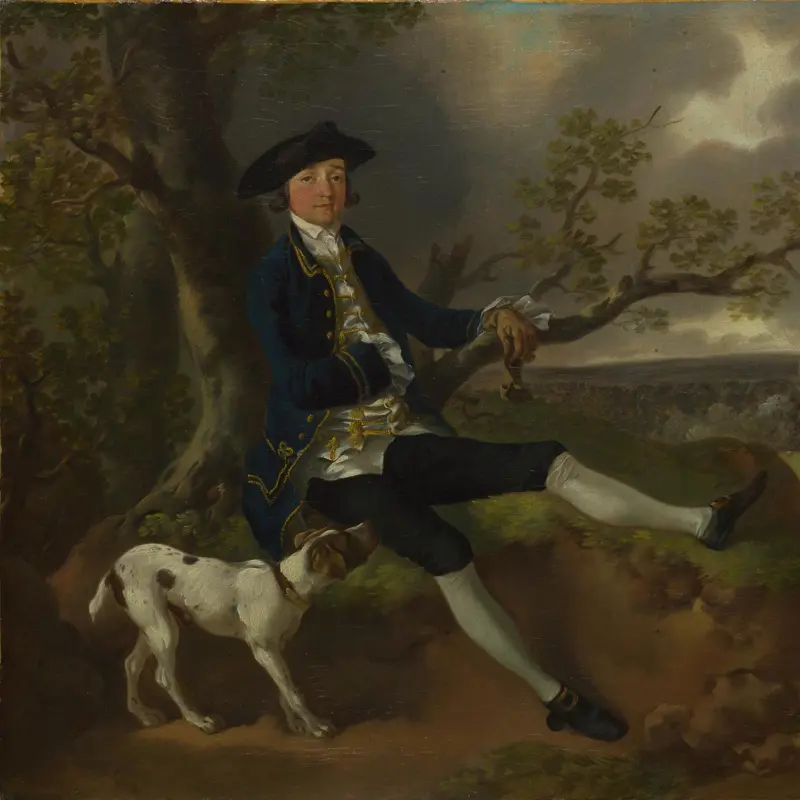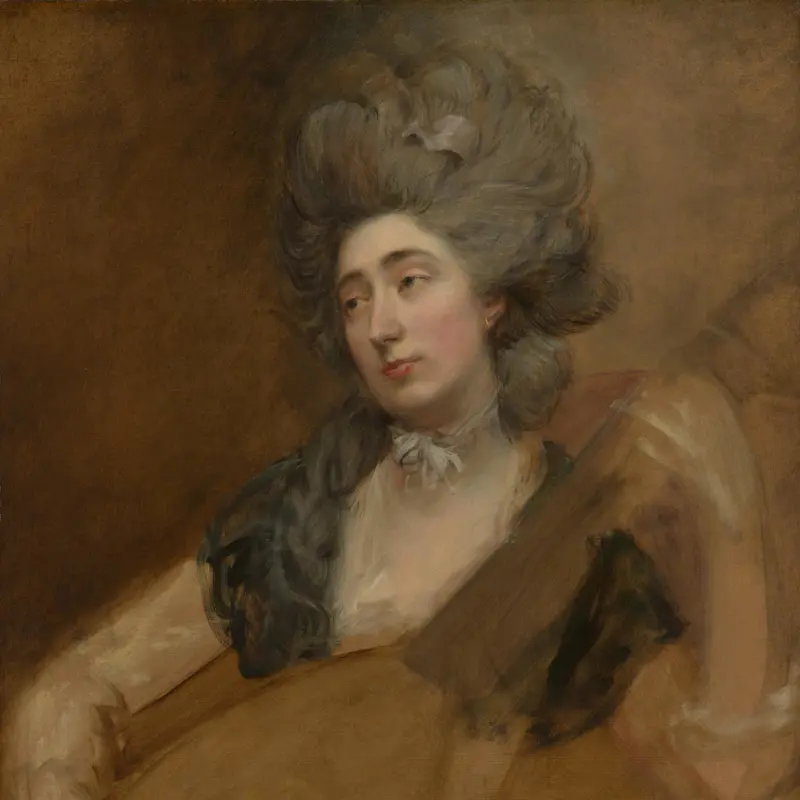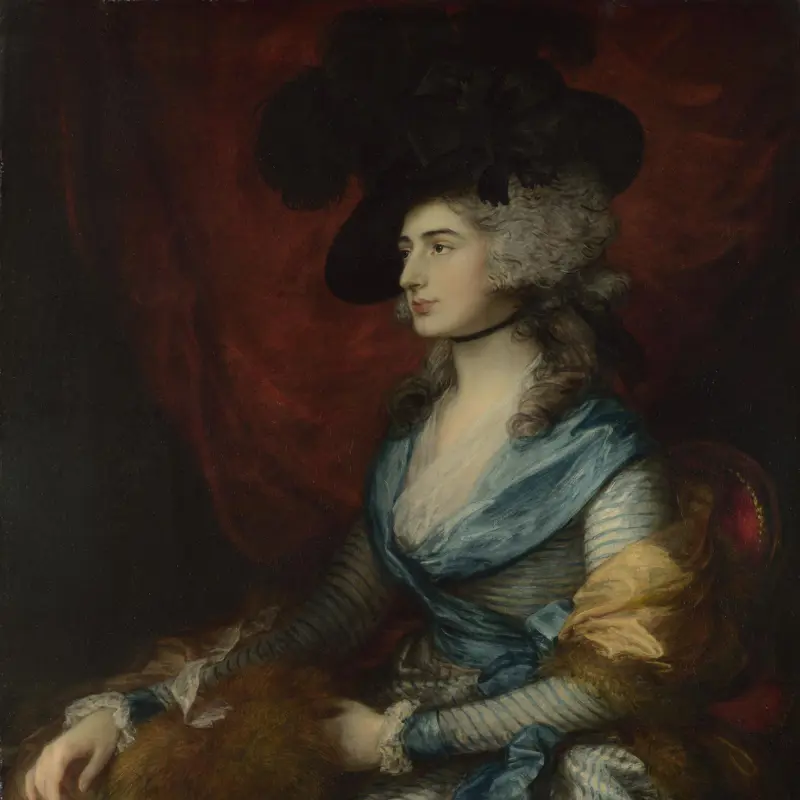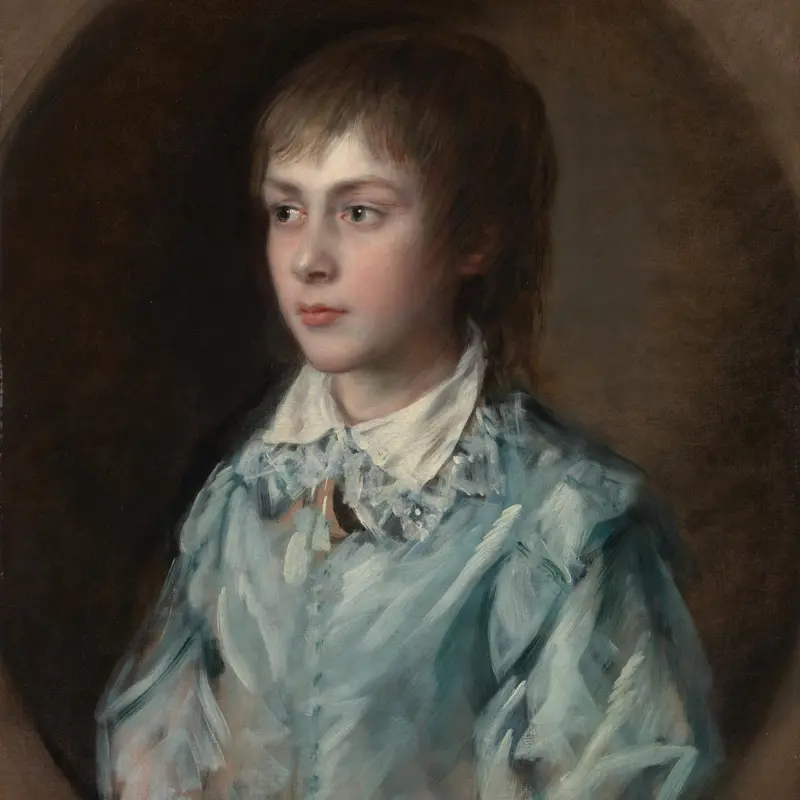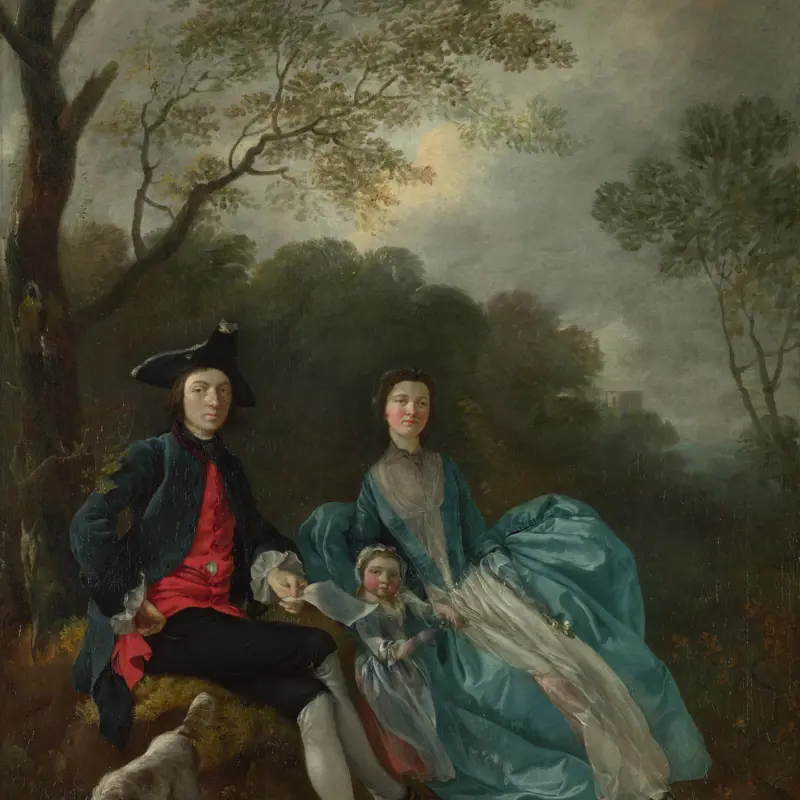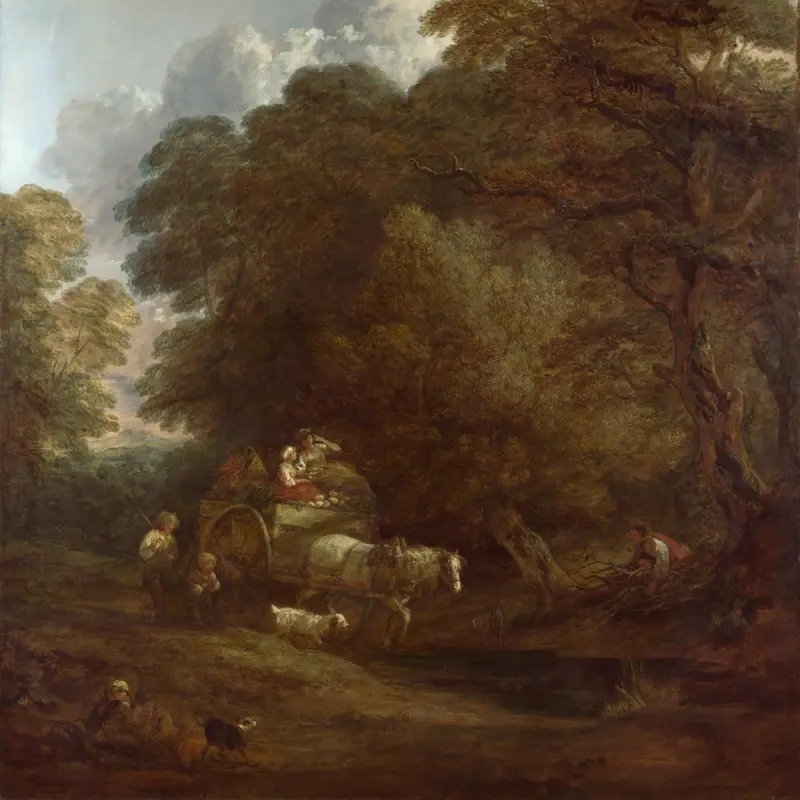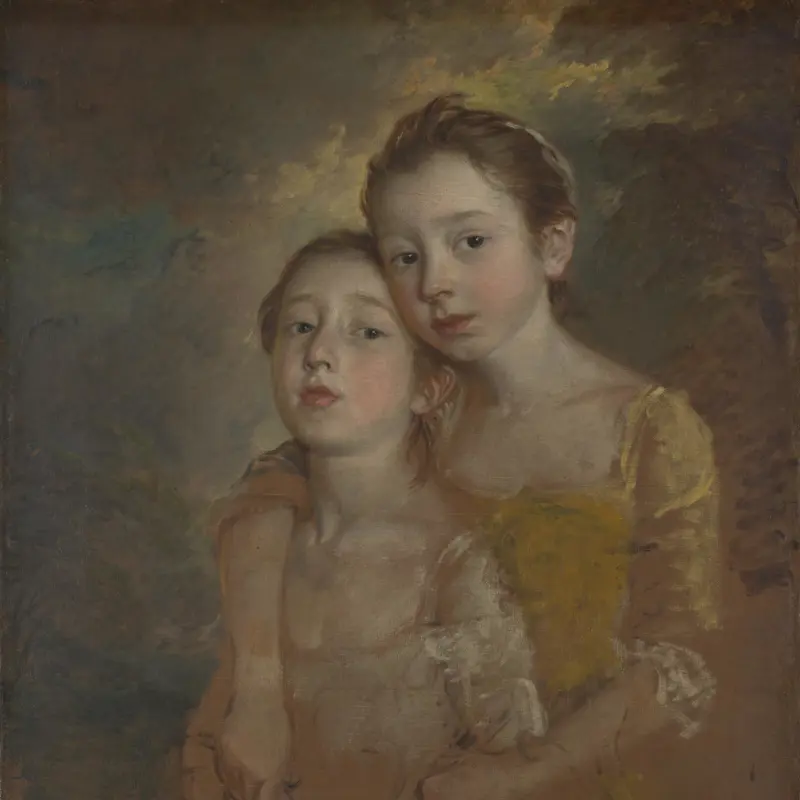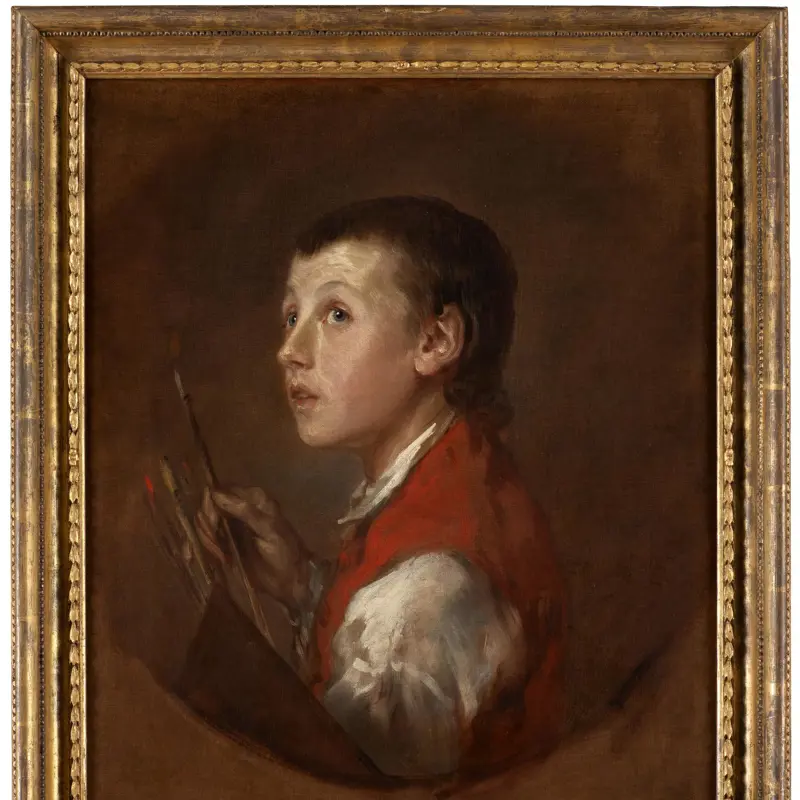Thomas Gainsborough, 'Mr and Mrs William Hallett ('The Morning Walk')', 1785
About the work
Overview
Gainsborough painted this portrait of William Hallett (1764–1842) and Elizabeth Stephen (1764–1833) shortly before their marriage on 30 July 1785. The couple are shown arm in arm on a morning walk with a Pomeranian sheepdog. The style of the portrait draws on the work of earlier painters Watteau and Van Dyck, and has a delicate poetic quality largely achieved through Gainsborough’s light, feathery brushwork, which is typical of his late style.
Bride and groom were both 21 when they married, and may be wearing their wedding clothes. Some have seen the portrait as a universal statement about wedded bliss and Hallett’s will records that he lived with Elizabeth ‘most happily for nearly 48 years’. However, Elizabeth’s life can't have been easy as betting and gambling were to be her husband’s downfall. They had two sons and four daughters, and when they died Elizabeth and William Hallett were buried in the church where they had been married.
Key facts
Details
- Full title
- Mr and Mrs William Hallett ('The Morning Walk')
- Artist
- Thomas Gainsborough
- Artist dates
- 1727 - 1788
- Date made
- 1785
- Medium and support
- oil on canvas
- Dimensions
- 236.2 × 179.1 cm
- Acquisition credit
- Bought with a contribution from The Art Fund (Sir Robert Witt Fund), 1954
- Inventory number
- NG6209
- Location
- Room 34
- Collection
- Main Collection
- Frame
- 18th-century English Frame
Provenance
Additional information
Text extracted from the ‘Provenance’ section of the catalogue entry in Judy Egerton, ‘National Gallery Catalogues: The British Paintings’, London 2000; for further information, see the full catalogue entry.
Bibliography
-
1856G.W. Fulcher, Life of Thomas Gainsborough, R.A., London 1856
-
1859British Institution, Catalogue of Pictures by Italian, Spanish, Flemish, Dutch, French and English Masters, with which the Proprietors have Favoured the Institution: June 1859, London 1859
-
1885Royal Academy of Arts, Exhibition of Works by the Old Masters, and by Deceased Masters of the British School (exh. cat., Royal Academy of Arts, January 1885 - March 1885), London 1885
-
1898W. Armstrong, Gainsborough and His Place in English Art, London 1898
-
1928W.T. Whitley, Art in England 1800-1820, Cambridge 1928
-
1955The National Gallery, The National Gallery: 1938-1954, London 1955
-
1955National Gallery, National Art Collections Fund Report: 1954, London 1955
-
1959Davies, Martin, National Gallery Catalogues: British School, 2nd edn (revised), London 1959
-
1963J.T. Hayes, 'A Note on Gainsborough's "The Morning Walk"', The Burlington Magazine, CV/725, 1963, p. 370
-
1967E.K. Waterhouse, The James A. de Rothschild Collection at Waddesdon Manor: Paintings, Fribourg 1967
-
1983A. Ribeiro, A Visual History of Costume: The Eighteenth Century, London 1983
-
1990D. Shawe-Taylor, The Georgians: Eighteenth-Century Portraiture and Society, London 1990
-
1991M. Cormack, The Paintings of Thomas Gainsborough, Cambridge 1991
-
1998J. Egerton, The British School, London 1998
-
2000Egerton, Judy, National Gallery Catalogues: The British Paintings, revised edn, London 2000
-
2001
C. Baker and T. Henry, The National Gallery: Complete Illustrated Catalogue, London 2001
Frame
This is an eighteenth-century finely carved, oil-gilt pinewood frame characteristic of the English Rococo period. The swept outline elegantly connects the pierced cartouches with leaf and shell motifs, along with scrolling flowers on either side. The back edge features an egg-and-dart motif. A sanded flat leads to the sight edge, which is adorned with acanthus leaf and shell motifs. The ornaments display some engraved lines in the chalk ground, highlighting the veins of the leaves.
Although the frame is contemporary with the painting, the extensions added indicate that it is not the original frame.
About this record
If you know more about this work or have spotted an error, please contact us. Please note that exhibition histories are listed from 2009 onwards. Bibliographies may not be complete; more comprehensive information is available in the National Gallery Library.

